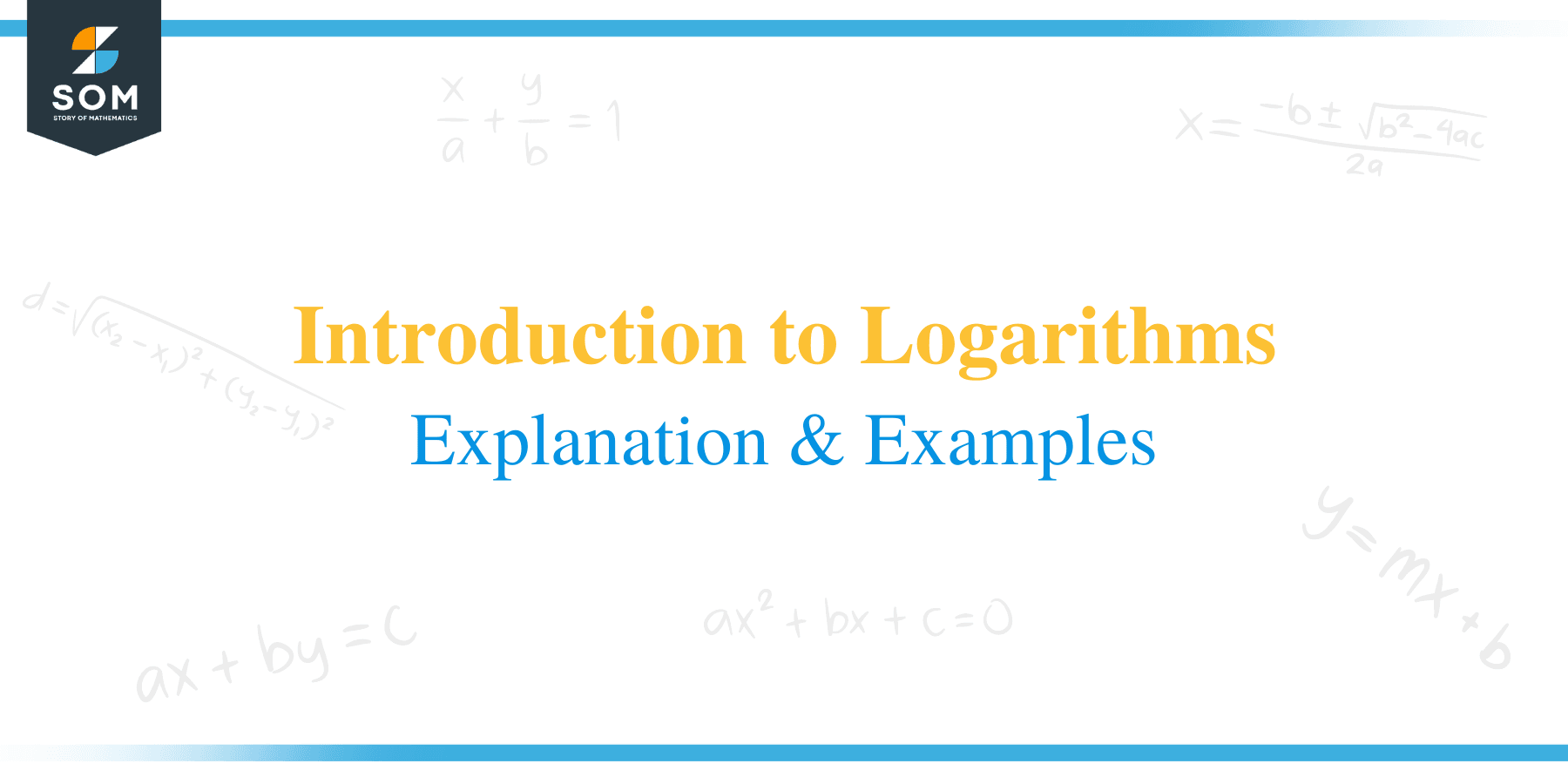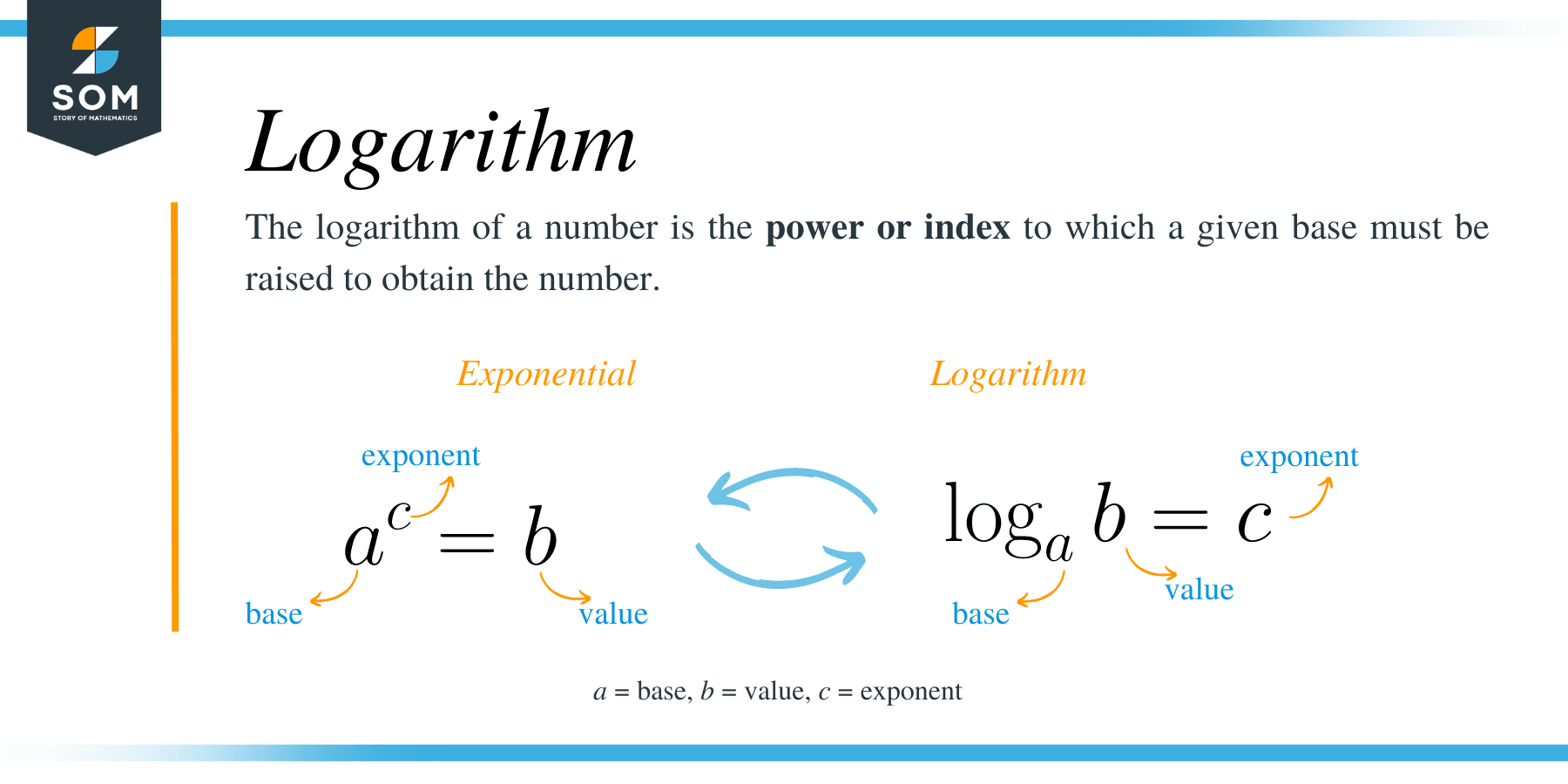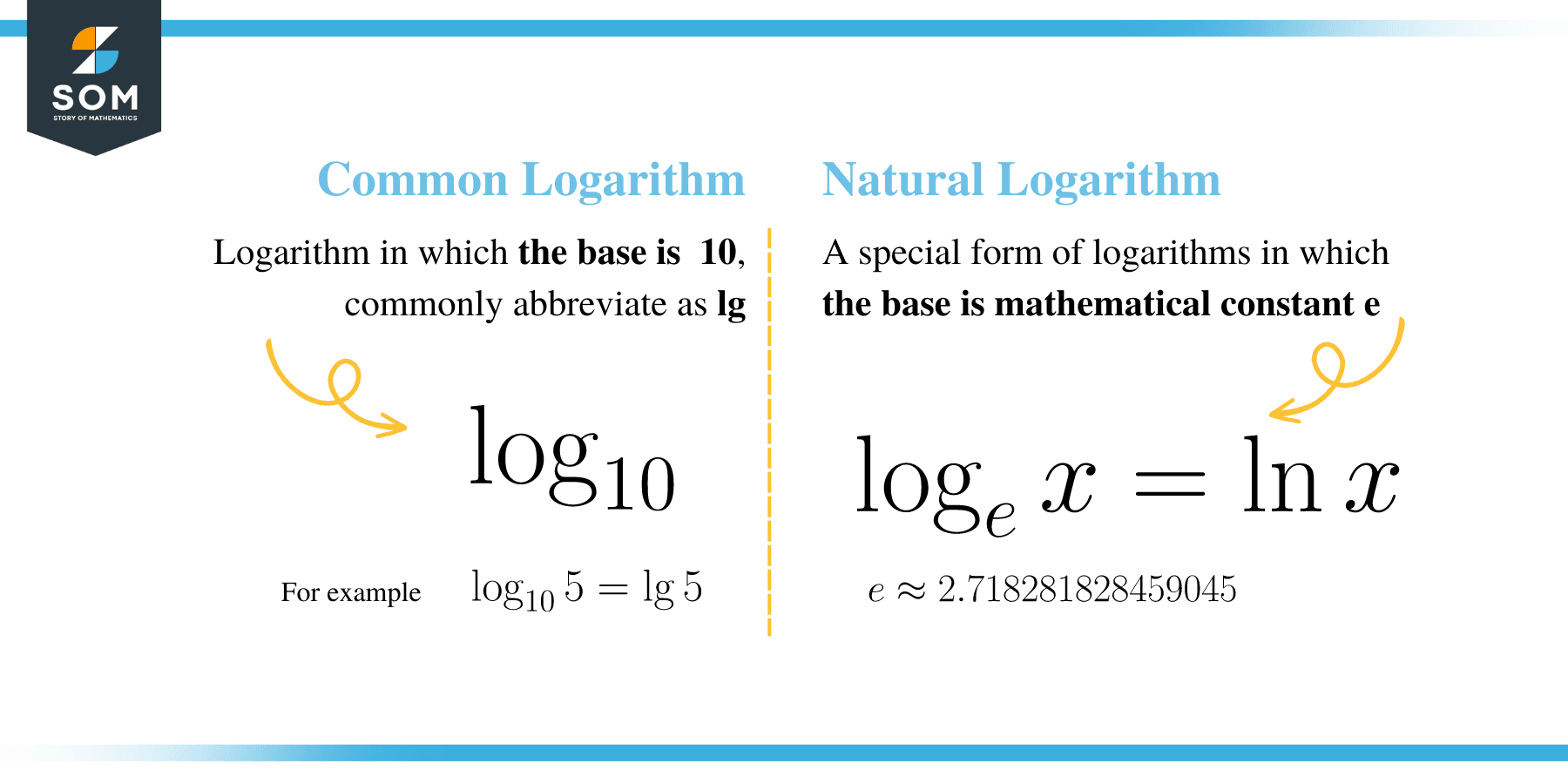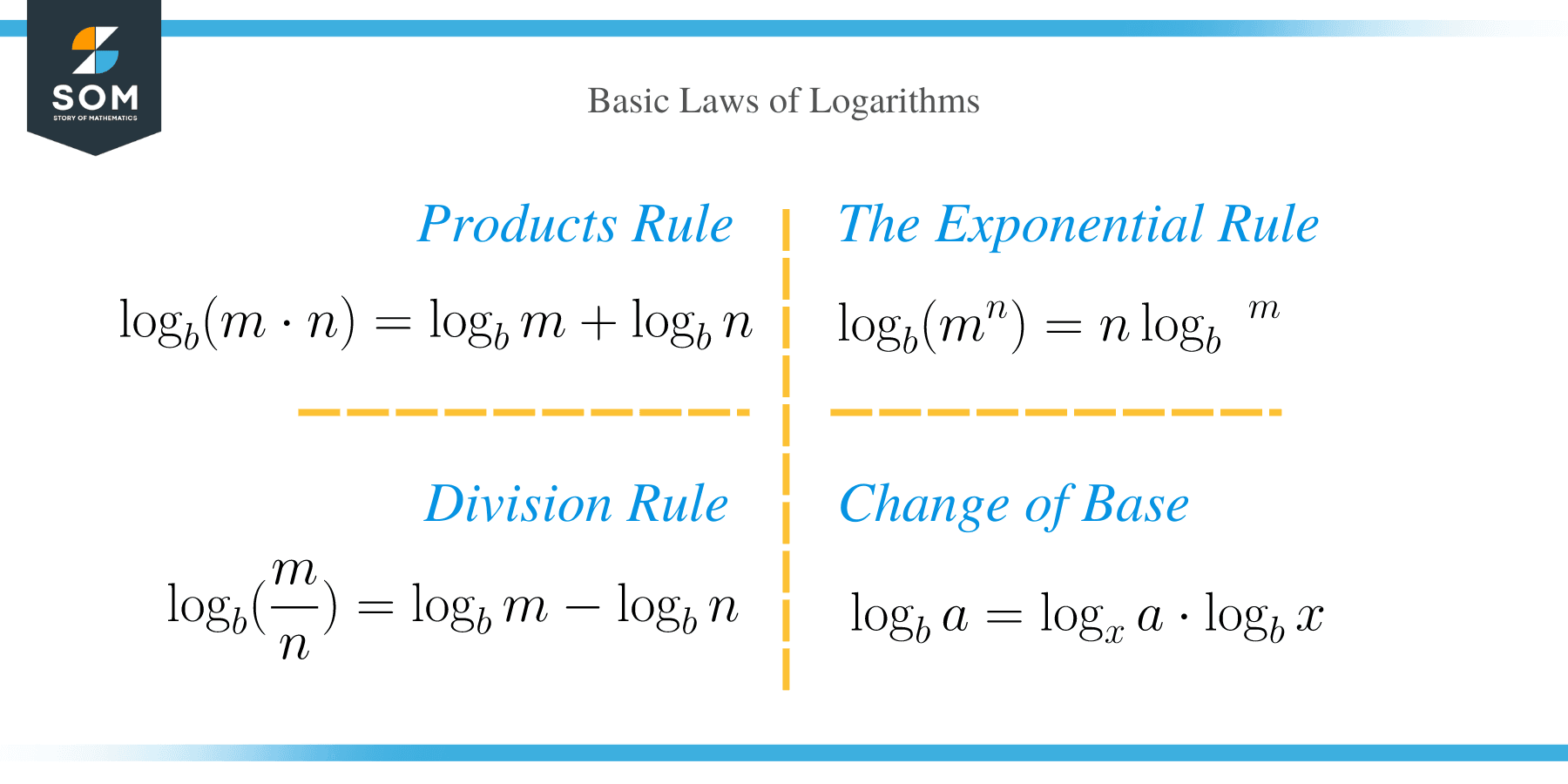- Home
- >
- Introduction to Logarithms – Explanation & Examples
JUMP TO TOPIC
Introduction to Logarithms – Explanation & Examples
 Before getting into the topic of logarithms, it is important we briefly discuss exponents and powers.
Before getting into the topic of logarithms, it is important we briefly discuss exponents and powers.
The exponent of a number is the frequency or number of times a number is multiplied by itself. An expression that represents repeated multiplication of the same factor is called a power.
For example, the number 16 can be expressed in exponential form as; 24. In this case, the numbers 2 and 4 are the base and exponent, respectively.
What is a Logarithm?
On the other hand, the logarithm of a number is the power or index to which a given base must be raised to obtain the number.
The concept of logarithm was introduced in the 17th century by a Scottish mathematician named John Napier.
It was introduced to mechanical machinery in the 19th century and to computers in the 20th century. The natural logarithm is one of the useful functions in mathematics and has many applications.
Consider three numbers a, x and n, which are related as follows;
ax = M; where a > 0 < M and a ≠ 1
The number x is the logarithm of the number n to the base ‘a’. Therefore, ax = n can be expressed in logarithmic form as.
log a M = x, Here, M is the argument or the number; x is the exponent while ‘a’ is the base.
For example:
16 = 2 4 ⟹ log 2 16 = 4
9 = 32 ⟹ log 3 9 = 2
625 = 54 ⟹ log 5 625 = 4
70 = 1 ⟹ log 7 1 = 0
3– 4 = 1/34 = 1/81 ⟹ log 3 1/81 = -4
The common logarithms
All the logarithms with base 10 are called common logarithms. Mathematically, the common log of a number x is written as:
log 10 x = log x
The natural logarithms
A natural logarithm is a special form of logarithms in which the base is mathematical constant e, where e is an irrational number and equal to 2.7182818…. Mathematically, the natural log of a number x is written as:
log e x = ln x
where the natural log or ln is the inverse of e.
The natural exponential function is given as:
e x

The negative logarithms
We know that logarithms are not defined for negative values.
Then what do we mean by the negative logarithms?
It means that the logarithm of the set of such numbers gives a negative result. All the numbers that lie between 0 and 1 have negative logarithms.
Basic Laws of Logarithms
There are four basic rules of logarithms. These are:
- Product rule.
The product of two logarithms with a common base is equal to the sum of individual logarithms.
⟹ log b (m n) = log b m + log b n.
- Division rule
The division rule of logarithms states that the quotient of two logarithmic values with the same bases is equal to each logarithm’s difference.
⟹ log b (m/n) = log b m – log b n
- The exponential rule of logarithms
This rule states that the logarithm of a number with a rational exponent is equal to the product of the exponent and its logarithm.
⟹ log b (m n) = n log b m
- Change of Base
⟹ log b a = log x a ⋅ log b x
⟹ log b a = log x a / log x b
NOTE: The logarithm of a number is always stated together with its base. If the base is not given, it is assumed to be 10.
For example, log 100 = 2.
Real-life application of logarithms
Logarithms very useful in the field of science, technology, and mathematics.
Here are a few examples of real-life applications of logarithms.
- Electronic calculators have logarithms to make our calculations much easier.
- Logarithms are used in surveys and celestial navigation.
- Logarithms can be used to calculate the level of noise in decibels.
- Ratio active decay, acidity [PH] of a substance and Richter scale are all measured in logarithmic form.
Let’s solve a few problems involving logarithms.
Example 1
Solve for x in log 2 (64) = x
Solution
Here, 2 is the base, x is the exponent and 64 is the number.
Let 2x = 64
Express 64 to the base of 2.
2x = 2 × 2 × 2 × 2 × 2 × 2 = 26
x = 6, therefore, log 2 64 = 6.
Example 2
Find x in log10 100 = x
Solution
100 = number
10 = base
x = exponent
Therefore, 10 x = 100
Hence x = 2
But 100 = 10 * 10 = 102
Example 3
Solve for k given, log3 x = log3 4 + log3 7
Solution
By applying the product rule log b (m n) = log b m + log b n we get;
⟹ log3 4 + log3 7= log 3 (4 * 7) = log 3 (28).
Hence, x = 28.
Example 4
Solve for y given, log 2 x = 5
Solution
Here, 2 = base
x = number
5 = exponent
⟹ 25 = x
⟹ 2* 2 * 2 * 2 * 2 = 32
Thus, x = 32
Example 5
Solve for log 10 105 given that, log 10 2 = 0.30103, log 10 3 = 0.47712 and log 10 7 = 0.84510
Solution
log10 105 = log10 (7 x 5 x 3)
Apply the product rule of logarithms
= log10 7 + log10 5 + log10 3
= log10 7 + log10 10/2 + log10 3
= log10 7 + log10 10 – log10 2 + log10 3
= 0.845l0 + 1 – 0.30103 + 0.47712
= 2.02119.
